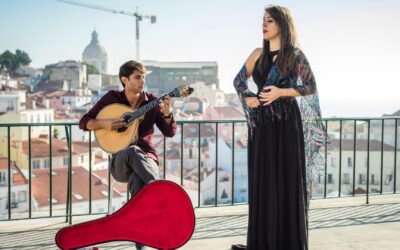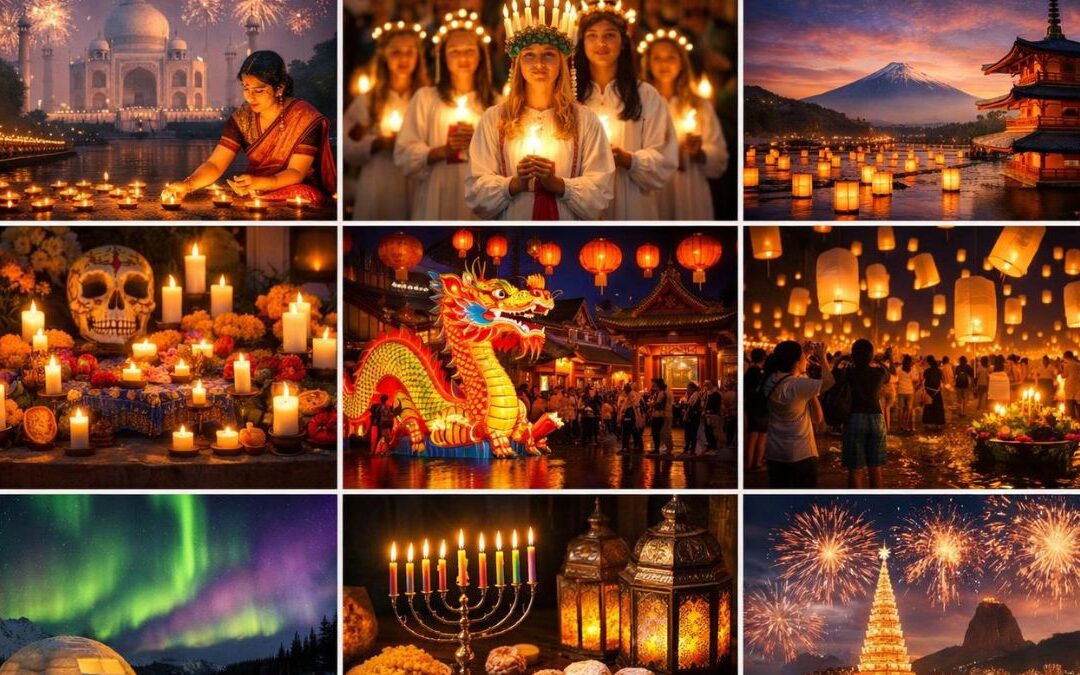- The Birth of Russian Orthodox Architecture
- The Hallmarks of Russian Orthodox Architecture
- Cultural and Historical Significance
- Russian Orthodox Churches: Beyond Russia’s Borders
- An Enduring Symbol of Russian Culture
- Keywords
- Key Takeaways
- FAQs
- What is the significance of the onion domes in Russian Orthodox Churches?
- What is the purpose of frescoes in Russian Orthodox Churches?
- What is the Iconostasis in a Russian Orthodox Church?
- How have Russian Orthodox Churches evolved over time in terms of their architectural designs?
- What role have Russian Orthodox Churches played in Russian history?
- How has Russian Orthodox architecture influenced other regions and countries?
- Are all Russian churches built in the Russian Orthodox architectural style?
- How have Russian Orthodox Churches fared during the Soviet era?
- Can non-Orthodox visitors enter Russian Orthodox Churches?
- How are Russian Orthodox Churches preserved and maintained today?
- Myth Buster
- Myth: All Russian Orthodox Churches have the same architectural design.
- Myth: The onion domes of Russian Orthodox Churches were inspired by Russian cuisine.
- Myth: Russian Orthodox Churches were invented by the Russians.
- Myth: Russian Orthodox Churches are exclusively found in Russia.
- Myth: The onion domes of Russian Orthodox Churches were designed to withstand heavy snowfall.
- Myth: Russian Orthodox Churches have no architectural influence outside of Eastern Europe.
- Myth: All Russian Orthodox Churches were destroyed during the Soviet era.
- Myth: Russian Orthodox Churches are exclusively for Orthodox Christians.
- Myth: Russian Orthodox Churches are only significant for religious purposes.
- Myth: Russian Orthodox Churches have no relevance in modern Russia.
- Checkpoint
The captivating landscape of Russia is punctuated by an array of architectural marvels, none more intriguing than the Russian Orthodox Churches. These sacred structures, with their distinctive onion domes, elaborate frescoes, and intricate designs, are not just places of worship but a testament to Russia’s rich cultural and religious history. This article aims to explore the unique architecture of Russian Orthodox Churches, delving into their origins, architectural elements, and the cultural significance they carry.
The Birth of Russian Orthodox Architecture
Russian Orthodox architecture emerged around the 10th century, following the Christianization of Kievan Rus’, the medieval state that laid the foundation for modern Russia, Ukraine, and Belarus. Early churches were heavily influenced by Byzantine architecture due to religious, cultural, and political ties with the Byzantine Empire. However, over time, Russian architects started to infuse their unique aesthetic and cultural elements, leading to the birth of the distinctive style we associate with Russian Orthodox Churches today.
The Hallmarks of Russian Orthodox Architecture
Several defining characteristics set Russian Orthodox Churches apart. The most striking of these are the onion-shaped domes that grace the tops of these churches. Often gilded or brightly colored, these domes are not just an aesthetic choice; they carry deep spiritual symbolism. They represent the heavenly abode and the flame of a candle, signifying the light of faith that guides believers.
Another key feature is the use of frescoes and iconography. The interior of a Russian Orthodox Church is often adorned with detailed frescoes, depicting scenes from the Bible or the lives of saints. The Iconostasis, a wall of icons and religious paintings, separates the nave from the sanctuary in every Russian Orthodox Church.
Russian Orthodox Churches are also known for their elaborate floor plans. The earliest form was the single dome church with a simple rectangular plan. As architectural skills advanced, the designs grew more complex, leading to the development of the cross-in-square plan and the multi-domed design, most famously seen in the Church of the Savior on Spilled Blood in Saint Petersburg.
Cultural and Historical Significance
The architecture of Russian Orthodox Churches goes beyond bricks and mortar. Each element, each motif, tells a tale, giving us insights into Russia’s religious beliefs, cultural ethos, and historical transformations.
The churches stand as silent witnesses to historical milestones, from the adoption of Christianity in Kievan Rus’, through the periods of Mongol rule and Tsarist autocracy, to the challenges faced during the Soviet era and the revival in post-Soviet Russia.
Russian Orthodox Churches: Beyond Russia’s Borders
The influence of Russian Orthodox architecture extends beyond Russia’s borders. With the spread of Orthodoxy and the expansion of the Russian Empire, the architectural style made its way into various parts of Eastern Europe, Central Asia, and even North America.
An Enduring Symbol of Russian Culture
Russian Orthodox Churches, with their unique architecture, stand as an enduring symbol of Russian culture. They are a testament to the country’s rich spiritual tradition and its architectural prowess. More than their aesthetic appeal, they reflect the soul of Russia, a beacon of faith and cultural identity that has withstood the test of time.
Keywords
- Russian Orthodox Churches: Places of worship in Russia that follow the Orthodox Christian tradition.
- Architecture: The art and science of designing and constructing buildings.
- Byzantine architecture: Architectural style influenced by the Byzantine Empire, characterized by domes, mosaics, and ornate decoration.
- Onion domes: Distinctive dome shape resembling an onion, commonly found in Russian Orthodox Church architecture.
- Frescoes: Paintings on wet plaster, often depicting religious scenes or figures.
- Iconography: The study or use of images or symbols, particularly in religious art.
- Iconostasis: A wall of icons and religious paintings separating the nave from the sanctuary in a Russian Orthodox Church.
- Cross-in-square plan: An architectural plan featuring a square space with four arms of equal length, forming a cross shape.
- Multi-domed design: Architectural style with multiple domes, often seen in Russian Orthodox Churches.
- Russian culture: The customs, traditions, and way of life of the Russian people.
Key Takeaways
- Russian Orthodox Churches have a unique architectural style influenced by Byzantine architecture but infused with Russian aesthetic and cultural elements.
- The onion-shaped domes, frescoes, and iconography are distinct features of Russian Orthodox Church architecture.
- The architecture of Russian Orthodox Churches reflects Russia’s religious beliefs, cultural ethos, and historical transformations.
- Russian Orthodox architecture has spread beyond Russia’s borders, influencing other regions and countries.
- These churches serve as enduring symbols of Russian culture and spiritual tradition.
FAQs
What is the significance of the onion domes in Russian Orthodox Churches?
The onion domes in Russian Orthodox Churches carry deep spiritual symbolism. They represent the heavenly abode and the flame of a candle, signifying the light of faith that guides believers.
What is the purpose of frescoes in Russian Orthodox Churches?
Frescoes in Russian Orthodox Churches serve as visual representations of religious stories and teachings. They depict scenes from the Bible, the lives of saints, and other important religious narratives.
What is the Iconostasis in a Russian Orthodox Church?
The Iconostasis is a wall of icons and religious paintings that separates the nave, where the congregation gathers, from the sanctuary, where the altar is located. It plays a significant role in the Orthodox Christian worship service.
How have Russian Orthodox Churches evolved over time in terms of their architectural designs?
Russian Orthodox Churches initially had simple rectangular plans with single domes. As architectural skills advanced, more complex designs emerged, such as the cross-in-square plan and the multi-domed design, showcasing the architectural progress and artistic creativity of the time.
What role have Russian Orthodox Churches played in Russian history?
Russian Orthodox Churches have stood as witnesses to historical milestones in Russia, from the adoption of Christianity in Kievan Rus’ to the challenges faced during the Soviet era. They have served as important centers of religious and cultural life throughout the country’s history.
How has Russian Orthodox architecture influenced other regions and countries?
With the spread of Orthodoxy and the expansion of the Russian Empire, the architectural style of Russian Orthodox Churches found its way into various parts of Eastern Europe, Central Asia, and even North America. It has left a lasting impact on the architectural landscape of these regions.
Are all Russian churches built in the Russian Orthodox architectural style?
While many churches in Russia follow the Russian Orthodox architectural style, there are also churches of other denominations and architectural styles present in the country. However, Russian Orthodox Churches are particularly iconic and representative of Russia’s cultural and religious heritage.
How have Russian Orthodox Churches fared during the Soviet era?
During the Soviet era, religious practice faced significant challenges, and many churches were closed, repurposed, or destroyed. Some Russian Orthodox Churches survived, often serving secular purposes, while others were restored or rebuilt after the collapse of the Soviet Union.
Can non-Orthodox visitors enter Russian Orthodox Churches?
Yes, non-Orthodox visitors are generally welcome in Russian Orthodox Churches. However, it is important to respect the rules and customs of the church, such as appropriate attire and behavior during religious services.
How are Russian Orthodox Churches preserved and maintained today?
Many Russian Orthodox Churches are protected as historical and cultural landmarks. They are maintained through ongoing restoration efforts, funding from the government, religious organizations, and donations from individuals. Preservation organizations and architectural experts play a crucial role in ensuring the longevity of these structures.
Myth Buster
Myth: All Russian Orthodox Churches have the same architectural design.
Reality: While Russian Orthodox Churches share common elements, such as onion domes and frescoes, their architectural designs can vary significantly. Different periods, regions, and architectural influences have led to diverse styles and variations in Russian Orthodox Church architecture.
Myth: The onion domes of Russian Orthodox Churches were inspired by Russian cuisine.
Reality: The onion domes have no direct connection to Russian cuisine. They are primarily influenced by Byzantine architecture and have symbolic and spiritual significance rather than culinary origins.
Myth: Russian Orthodox Churches were invented by the Russians.
Reality: The Russian Orthodox Church is a branch of Eastern Orthodox Christianity and has its roots in Byzantine Christianity. The architectural style of Russian Orthodox Churches developed through a combination of Byzantine influence and unique Russian cultural elements.
Myth: Russian Orthodox Churches are exclusively found in Russia.
Reality: While Russian Orthodox Churches are most commonly associated with Russia, they can also be found in other countries with Orthodox Christian communities, including Ukraine, Belarus, Romania, Greece, and various regions influenced by the Russian Empire.
Myth: The onion domes of Russian Orthodox Churches were designed to withstand heavy snowfall.
Reality: The onion domes were not specifically designed to withstand snowfall. They evolved as a distinctive architectural feature with spiritual symbolism and aesthetic appeal. The domes are typically covered with metal or shingles, which help prevent snow accumulation.
Myth: Russian Orthodox Churches have no architectural influence outside of Eastern Europe.
Reality: The architectural influence of Russian Orthodox Churches extends beyond Eastern Europe. With the Russian Empire’s expansion, the style reached regions in Central Asia, including Kazakhstan and Kyrgyzstan, and even parts of North America, such as Alaska.
Myth: All Russian Orthodox Churches were destroyed during the Soviet era.
Reality: While many Russian Orthodox Churches faced closures, repurposing, or destruction during the Soviet era, not all were completely destroyed. Some survived, albeit with limited religious activity, while others were restored or rebuilt after the collapse of the Soviet Union.
Myth: Russian Orthodox Churches are exclusively for Orthodox Christians.
Reality: While Russian Orthodox Churches are primarily places of worship for Orthodox Christians, they are often open to visitors from all backgrounds. Non-Orthodox individuals are generally welcome to visit and appreciate the architectural beauty and cultural significance of these churches.
Myth: Russian Orthodox Churches are only significant for religious purposes.
Reality: Russian Orthodox Churches hold cultural, historical, and artistic significance beyond their religious purposes. They serve as architectural landmarks, repositories of art and iconography, and symbols of Russian cultural identity.
Myth: Russian Orthodox Churches have no relevance in modern Russia.
Reality: Russian Orthodox Churches continue to play a significant role in modern Russia. They serve as active places of worship, cultural hubs, and tourist attractions. The Russian Orthodox Church maintains its influence in various aspects of society, including education, charitable work, and public life.
Checkpoint
Which architectural element is most closely associated with Russian Orthodox Churches?
a) Gothic arches
b) Minarets
c) Onion domes
d) Corinthian columns
C
What is the purpose of the Iconostasis in a Russian Orthodox Church?
a) To display religious artifacts
b) To separate the nave from the sanctuary
c) To support the church structure
d) To provide seating for the congregation
B
Which architectural style had a significant influence on early Russian Orthodox Churches?
a) Baroque
b) Gothic
c) Byzantine
d) Romanesque
C
What do the onion domes of Russian Orthodox Churches symbolize?
a) Protection from the elements
b) Russian cuisine
c) Heavenly abode and the light of faith
d) Architectural innovation
C
True or False: Russian Orthodox Churches can only be found in Russia.
False











0 Comments